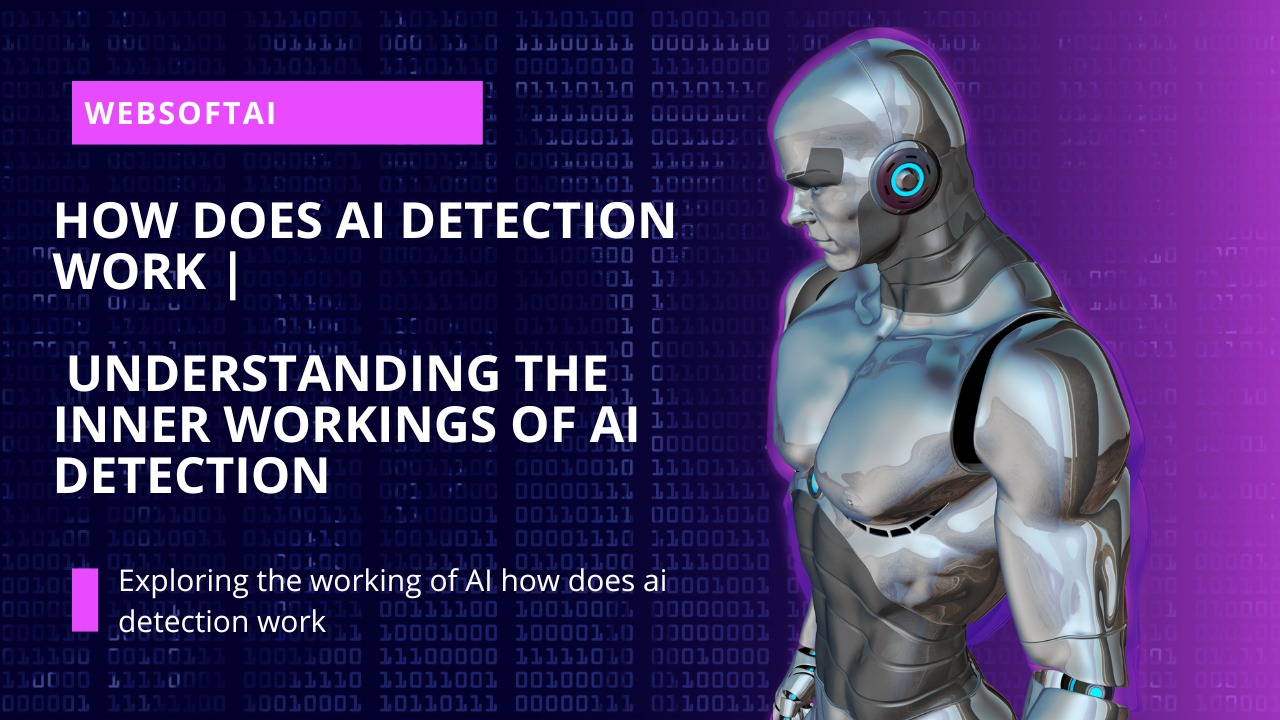Date: [05 june 2024] how does ai detection work
In this present digital age, an artificial intelligence (AI) is a significant aspect of our life. It has revolutionized various fields from voice assistants to image recognition systems. One critical thing about AI is that it can detect patterns and make decisions out of them. In this article, we will explore how does ai detection work and the world of AI detection and how it functions.

how does ai detection work and What is AI Detection?
what is ai detection and how does ai detection work . AI detection is defined as the process where by AI systems analyze inputs like data or sensory information to look for patterns, anomalies or specific objects. This involves using complex algorithms and models to accurately predict and decide based on the input provided.
Data Collection and Preprocessing:
A large amount of data is necessary in order for effective AI detection to take place. This data forms the basis for training AI models. Datasets are carefully selected so as to ensure that they cover a wide spectrum of examples pertinent to the detection task at hand. Once gathered, data has to be preprocessed which means cleaning, labeling and putting it in a format suitable for training an AI model.
AI Model Training:
Training the AI model is the crux of AI detection. This involves inputting preprocessed data into the AI model, which in turn learns to identify patterns and make predictions. The nature of AI models used in detection tasks may be different with respect to various tasks like image recognition via convolutional neural networks (CNNs) or sequence recognition using recurrent neural networks (RNNs).
When the model gets trained, it adjusts its internal parameters so as to minimize any differences between its predictions and ground truth labels contained within training data. In this way, optimization process (iterative) ensures that it gets better with an increased accuracy.
Feature Extraction:
Feature extraction has a significant role in AI detection. It involves separating out useful pieces of information from input data that can aid an AI model to differentiate between various patterns or objects. For instance, such features might include edges, textures and color gradients for image detection.
The AI model learns these features through feature learning. This is a process of identifying and emphasizing the most important aspects of the input data that makes it to become better in finding out the desired patterns.
Inference and Prediction:
Once trained, an AI model can be deployed for inference and prediction. During this phase, the model takes up new unseen data as inputs and employs its trained understanding to make a decision or predict. The input is analyzed by the model based on the learned patterns in training and therefore generates an output basing on what it has learnt.
Evaluation and Fine-tuning:
Continuous evaluation and fine-tuning are necessary to ensure accuracy and dependability of an AI detection system. Model performance is evaluated using separate validation or test datasets where metrics such as accuracy precision recall are calculated. Therefore, any adjustments are made to improve its performance with respect to its architecture or parameters if necessary.
people also read How to Get My AI on Snapchat
Challenges and Future Developments:
AI detection has made remarkable progress but there remain challenges. Significant concern is also posed by adversarial attacks which involve malicious actors manipulating inputs sent into AI systems so that they deceive them. Researchers are actively working on developing robust AI models that are resistant
AI detection is one of the most powerful and hardest fields which have a huge impact in different areas. When we understand these mechanisms, we will be able to know what AI systems can and cannot do. In future, technology advances will make AI detection even more complicated thus providing new openings and changing our lives with regard to interactions with the outside environment.

